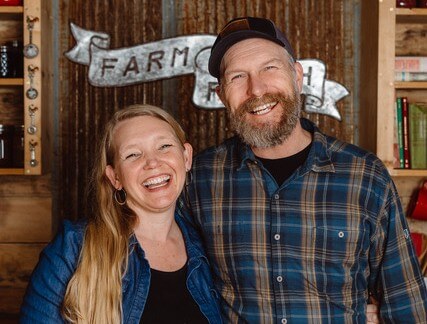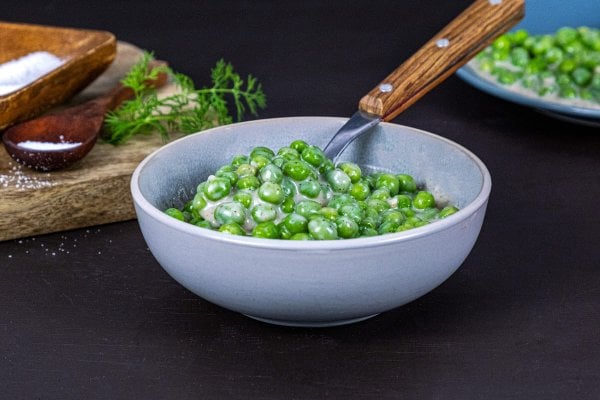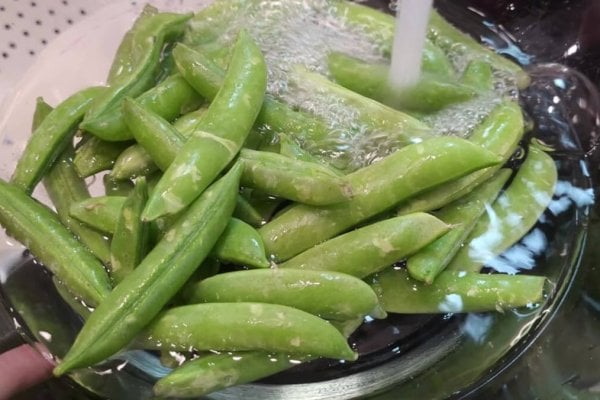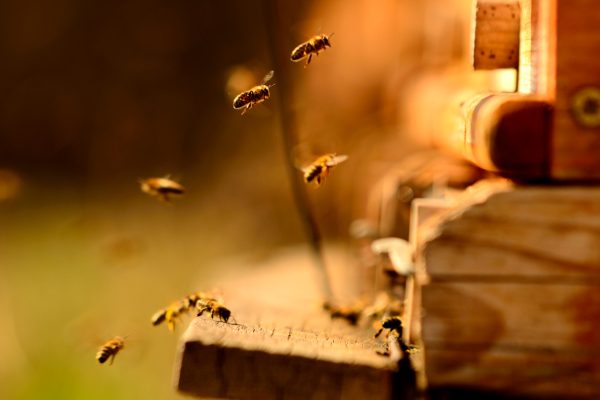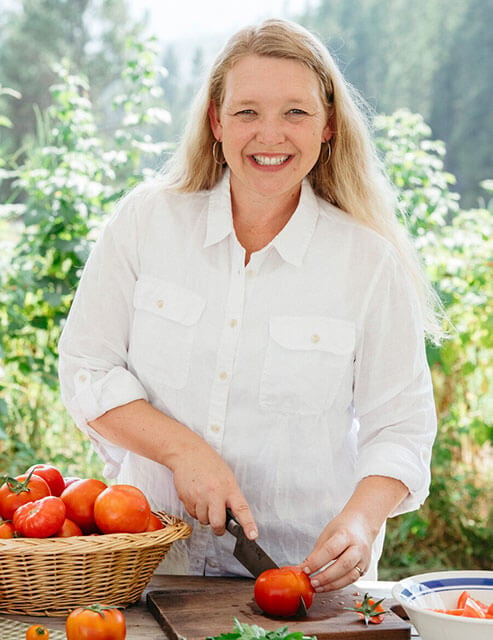There’s a lot of debate about which pig is the ultimate homestead pig. In this post (and podcast), we’re sharing why we think Kune Kune pigs are the best fit for our homestead and family and why you may want to consider raising this breed.

Why We Love Kune Kune Pigs
We’ve had our Kune Kune pigs for over a year and a half. In the past, we’ve raised pigs seasonally to fill our freezers, purchasing feeder pigs each year.
However, because our mindset is always that of improvement, we strive to be more resilient and get systems in place to eliminate the reliance on outside sources for our needs. We don’t want to rely on purchasing feeder pigs each year to supply our freezer with pork and our pantry with lard.
At the time of this podcast, a feeder pig costs roughly $150, which doesn’t include feeding it out to get it to butchering weight. This isn’t a sustainable method, so we began looking into raising breeding stock to keep our supply of pork and lard “in-house.”
This led us to the question of which pig breed to raise.
Why Raise Kune Kune Pigs
There are so many considerations when choosing the right pig breed, many of which are personal preferences.
- How much meat do you want?
- How much lard do you want?
- Do you want the pigs to work for you?
- What’s their temperament?
- How big will they get?
- How easy are they to contain?
Since this isn’t a post on pig breeds but Kune Kune pigs, we’ll stick to why we think they make the ultimate homestead pig breed.

They Don’t Root
As anyone who has raised pigs knows, they love to root. For this reason, they are great to help turn a compost pile or prepare an area for a future garden. But unless you have a designated area where you’ll keep them full-time, they can also damage a pasture in very little time.
Kune Kune pigs are known to be one of the only pigs that don’t root. There may be exceptions to this rule, but we were very careful when choosing our breeding stock to ensure they came from a pure-bred line that didn’t root. We’ve heard the Idaho Pasture Pigs don’t root; however, everyone we know who has raised this breed tells us otherwise.
Since Kune Kune pigs don’t root, we still bring in a couple of “bacon pigs” each year to help us in the areas where we need some rooting, specifically to turn up our deep litter bedding system in our barn. We consider these “working pigs” and don’t mind investing in them because of the labor they save us each year.

Good Grazers
We love that we can use our Kune Kune pigs around the edges of our pasture to help keep the grass down and eliminate the need for weed whacking.
When you use a rotational grazing method, Kune Kune pigs fit right in with a healthy approach to maintaining quality pastures. Not only that, but you’re saving feed costs if you have the pasture to graze them in.
Easy to Contain
Kune Kune pigs are extremely easy to contain. We simply run two electric wires set low to the ground (right at snout level) around the perimeter where we want to keep them.
They’re incredibly docile, and we’ve never had an issue with them escaping or pushing their boundaries.
Size
Because the Kune Kune pig is one of the smallest breeds of pigs, they don’t require as much food to get to full size.
They’re also easier to manage for most family members. This is important to consider if you have children or elderly people helping to raise and care for the pigs.

Good Temperament
The pig’s breed and size are very important considerations when raising pigs with children. We love raising Kune Kune pigs because they’re among the smallest pig breed and extremely friendly.
There are always exceptions regarding their temperament, such as a sow protecting her piglets, but overall, Kune Kune pigs are very friendly and docile. They’ll often come over for scratches and cuddles.

Reduced Feed Cost
Finding pasture-raised pork at an affordable price is getting harder and harder. Furthermore, not all pigs should be raised on grass alone. The Kune Kunes are one exception.
We were on the search for a pig that would reduce our overall feed cost and still provide us with ample amounts of food for our family. Our pigs can survive the winter on 100% hay and/or kitchen scraps.
When we first got them, we were worried about them staying warm through the winter. We initially overfed them and ended up with some breeding issues, but after reevaluating our feeding systems and realizing they can survive on grass alone, they’re thriving in our cold north Idaho climate.
Once the weather warms up and we’re growing food in the gardens again, we supplement with some treats from the garden. But overall, they can sustain themselves on grass alone, or just the waste food from our kitchen, making them a zero-cost food source for our family.
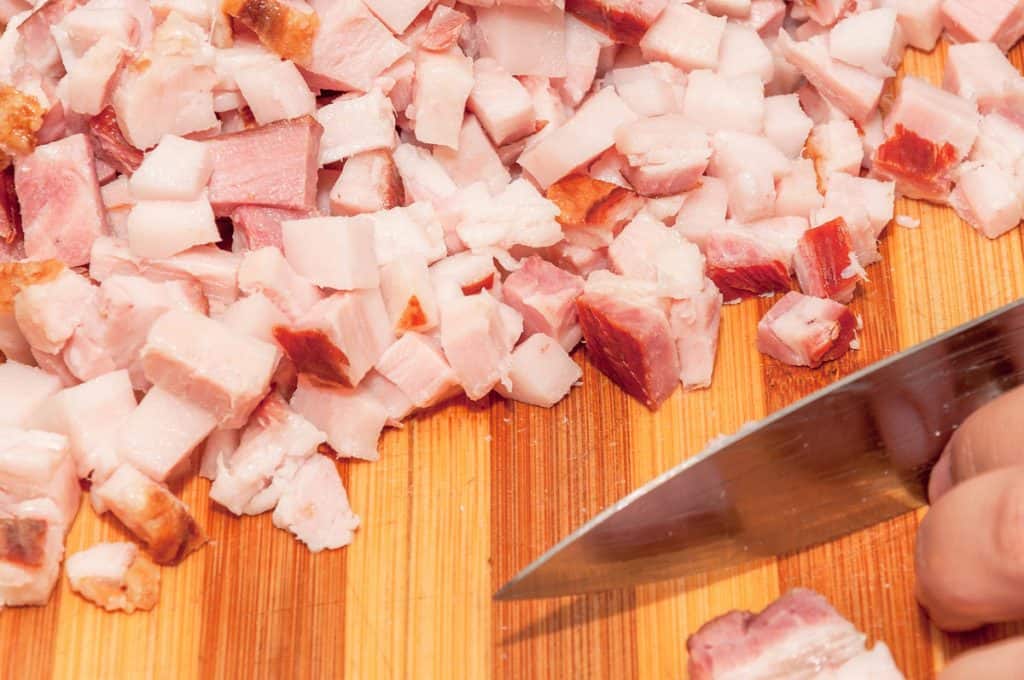
High Fat Producers
Kune Kune pigs are known as “fat pigs” or “lard pigs,” meaning they produce more fat than other breeds. Some people don’t enjoy the large amounts of fat that come with raising these breeds because they’re looking for more meat from their pigs.
Once we realized the countless uses we had for lard on the homestead, we knew a fat pig was the way to go for our family.
Fat Pig Breeds (Lard Pigs)
Not all pigs are considered “fat pigs” or “lard pigs.” Here are some of the well-known breeds:
- Kune Kune’s
- Mangalitsa’s
- American Guinea Hogs
- Idaho Pasture Pigs
For homesteaders, fats are one of the hardest resources to come by (and they happen to be among the most expensive to buy).
It takes a lot of raw milk and weekly churning to make enough homemade butter for a year for our family. We’ve been practicing pressing our own seed oils, but this does require special equipment. We were sold when we realized we could have one day of rendering lard to provide enough fat to sustain our family for a year!
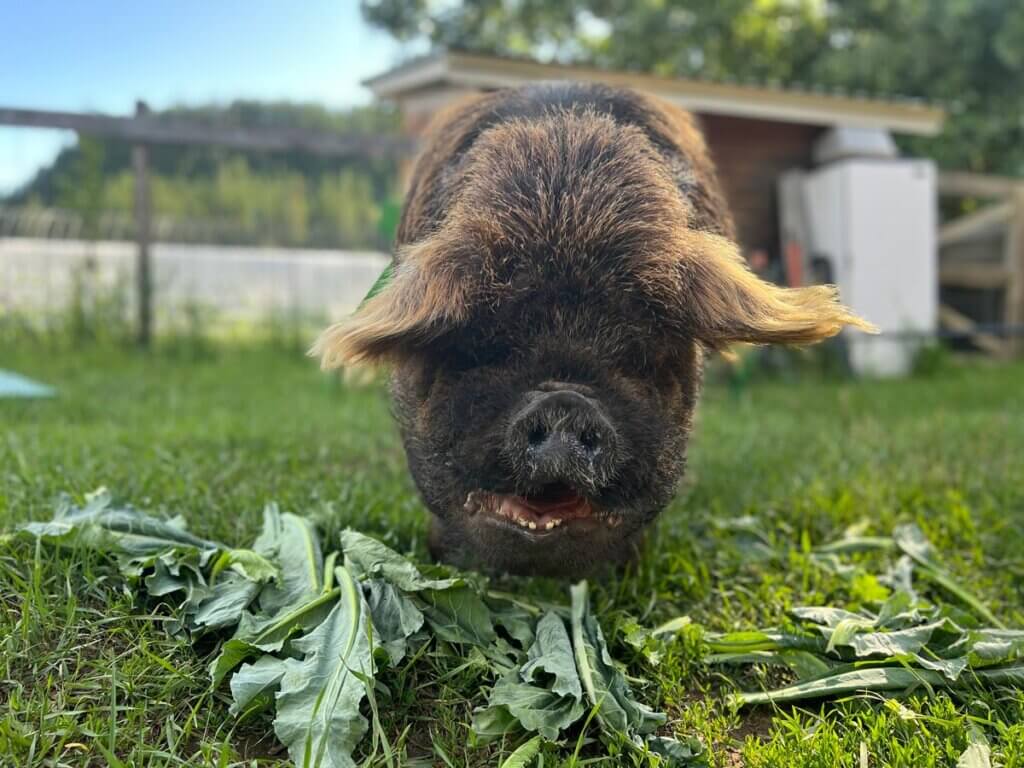
What’s Special About Kune Kune Pigs?
We love raising Kune Kune pigs because they can survive on zero external inputs. They can be sustained on what we produce here on the farm. They are easy to maintain and manage and have a great temperament. We can put them to work, reducing our labor, fuel costs, and kitchen costs (by not having to purchase additional fats).
Consider adding Kune Kunes to your homestead if you want to raise pigs. We think you’ll love them just as much as we do.

More Posts You May Enjoy
- Easy Homemade Breakfast Sausage Recipe (Links or Patties)
- A Homesteader’s Guide to Cured Bacon with The Farmstead Meatsmith
- How to Ferment Grains & Reduce Animal Feed Costs
- Rotational Grazing Method
- Preparing the Homestead for Winter
- How to Raise a Year’s Worth of Meat
- Does Homesteading Save You Money?
- How to Grow a Year’s Worth of Food with Melissa K. Norris

